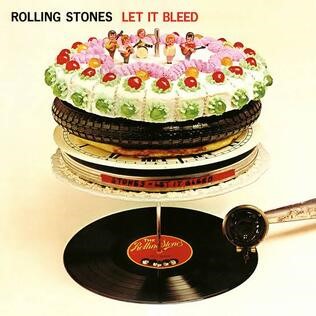
The Beastie Boys and Me
Published on Dec 10, 2025
The Doors and Me
Published on Dec 8, 2025
Hold the Line: a breakup story starring Toto
Published on Dec 3, 2025
Letter From the Publisher
Published on Nov 29, 2025
More Liner Notes…
Featured Essay: Stones for Breakfast
by Michael Sales

I adored Aunt Norisse. I realized later in life that she was an inveterate hophead. Spending a lot of time at the Fillmore West between 1968-1976, I came to understand that that the reds, whites and yellows that found their way to her tongue with regularity might not have been that good for her, but when I knew her best in the 50s, I never paid that no mind.
Sometime in early 1956, she gave me a copy of Elvis’ first album.
Life hasn’t been the same since.
I got to see Elvis on November 25th, 1956 — one day before my twelfth birthday — at the Louisville Armory. His paternal grandparents lived in Louisville. Two days before the show, teenagers ripped up all the grass on their front lawn as devotional relics, which I’m confident some continue to cherish.
Scores of women fainted around me that afternoon. Their heads hit the concrete floor of the Armory or the metal chairs upon which we were all seated with a distinctive sound I can hear today.
The event had a lasting impact.
Flash forward to 1966 when weed introduced itself.
I had been a rock ‘n’ roll enthusiast in all the intervening years. I got to see James Brown and Otis Redding perform several times. My Sunday school teacher, Mr. Cohn, was an impresario on the weekends who produced R&B and Soul revues at Freedom Hall in Louisville. There weren’t that many white boys who went to those shows. Looking back, I’ve concluded that it wasn’t by chance that I was seated next to Mohammed Ali (known at the time as Cassius Clay) in the front row at some of those show.
Louisville had the benefit of being at the crossroads of many musical traditions, including avant garde classical music introduced by the local symphony orchestra. Jazz greats, such as Don Shirley, as depicted in an heart rending Green Book scene, also performed there.
The Sultans were my passion throughout high school. I saw them perform about 100 times with Tommy Cosdon (Cosmo) as the LV. “It’ll Be Easy” stayed at the top of the local charts for ten weeks.
But it wasn’t until I started getting stoned that I got underneath the music and into an alternative, more expansive understanding of reality.
I’d smoked a little weed in the Fall of 1966, but it wasn’t until November of that year when a friend turned me on and queued up Cream’s “I Feel Free,” that I realized what “it” was all about, that I began to be “experienced” in the non-egoistic way that Jimi was talking about.
I’m still working on that.
As time went on, I dropped out and moved to the Haight-Asbury, a block away from the Grateful Dead’s home at 710 Asbury.
While living there, I got to see The Stone three times, including once at Altamont, where the 60s death knell was festooned with murder and mayhem.
While the trauma of that day cemented my decision to move to “Sanity Cruise,” I was so embedded in the music and the ethos of that era, that the satanic majesty of the Stones’ “Let It Bleed” album became a daily morning ritual. I awoke at 7ish. Got my mind right with a J, and listened to “Gimme Shelter” about tens times before breakfast.
The güiro that at the start of the song woke up my libido, showed me the way.
I never knew the words of the song until I looked them up today. Now, I can see why Patti Smith calls it a profoundly anti-war statement.
Decades later, I’m not much of an active stoner. Like Zorba said, “Wife, kids…the full catastrophe” can bring an end to an extended childhood of the 20s.
I have reflected on why stoning was so attractive to me and so much a part of my life.
My daughter tells me that I haven’t necessarily grown up, but that I have grown older. In the process, I’ve realized that the change that’s occurred in me in my youth is the one that philosophers have been describing for centuries. The boundary between me as the subject observing and analyzing reality as the object became more fluid, plastic… interdependent.
As George said, “Life goes on within you and without you.” Strikes me that the statement we Hippies and our sequelae say and hear so often that “We are all one” refers to what has been demonstrated by a variety of advanced scientific thinkers: The observed and the observer are integrally linked. They create each other.
War, rape and murder are just a shot away. And, they are over if we want it.

